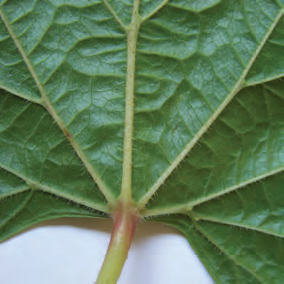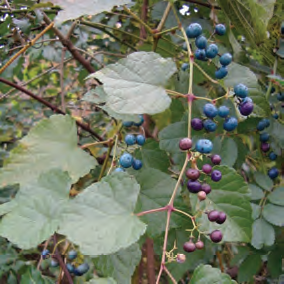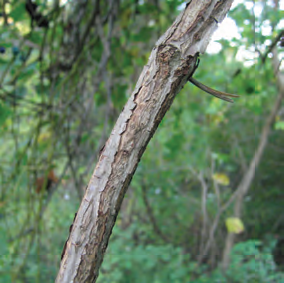Porcelain Berry
Ampelopsis brevipedunculata
Grape Family (Vitaceae)
Woody Vine
Flowers: May–Aug
Fruits: Sep–Oct
Native Range: Russia, China, Korea, Japan
Introduction: 1870s as an ornamental / bedding plant.
Mid-Atlantic Range & Habitats: Moist woods, thickets and floodplains, in the southern part of our region, north to Long Island, the Hudson Valley, and southern PA.


Porcelain-berry vines form dense mats, climbing over other vegetation, and reducing light availability to other plants. The seeds are dispersed by birds and small mammals that eat the fruit, as well as by water when the species is growing in riparian areas. Porcelain-berry appears to be most invasive in disturbed edges, gaps and riparian areas, while it is usually not found in closed canopy mature forest.

Quick ID
- Leaf Undersides: Hairs present ONLY on the veins, NOT ON THE LEAF SURFACE
- Fruit Color: White, turning blue or purple, with white flesh
- Bark: Bark of mature vines NOT peeling in narrow, papery strips
- Pith: Pith white
More ID Tips
The eight or so species of native grapes in our region resemble Porcelain-berry in their climbing habit, the presence of tendrils, similar leaf shape, and small yellow-green flowers. The leaves of native grapes have varying degrees of hairiness, from densely woolly on the underside to small tufts of hair where the veins diverge. The flowers and fruits of the native grapes are arranged in an elongate inflorescence, whereas the inflorescence of Porcelain berry is flat or round-topped. Porcelain-berry fruits have a characteristic white, starchy flesh with an odor similar to that of fresh sweet corn.


